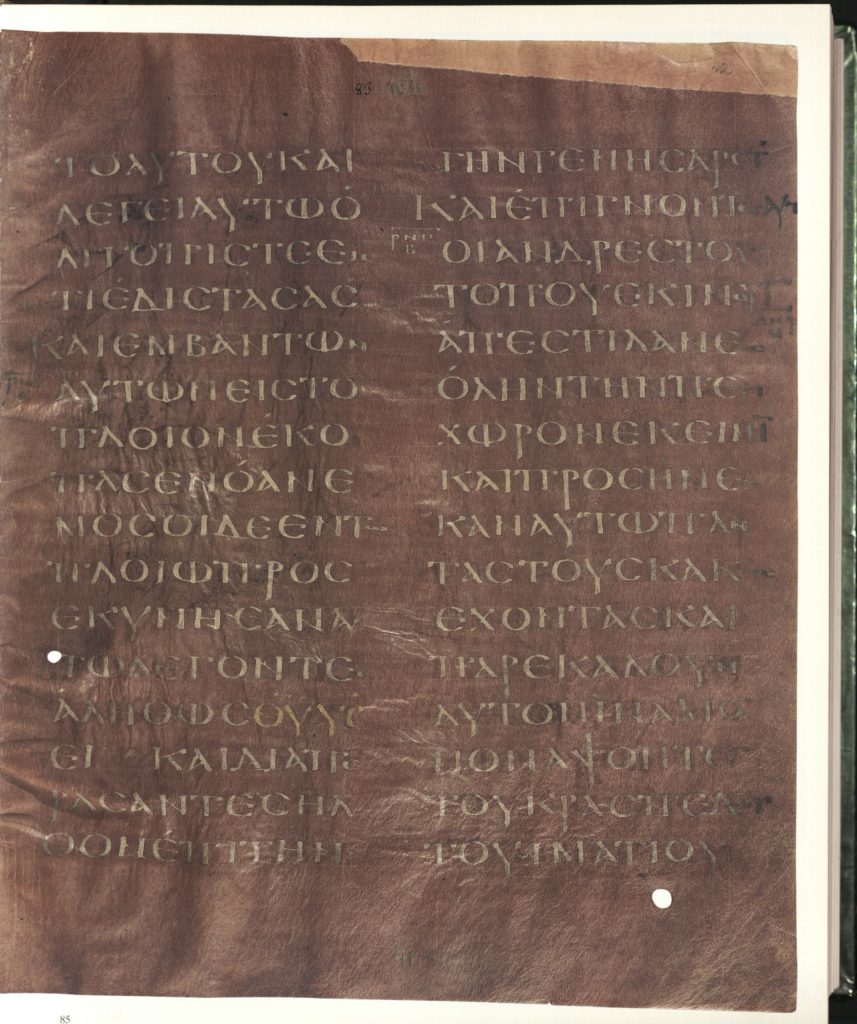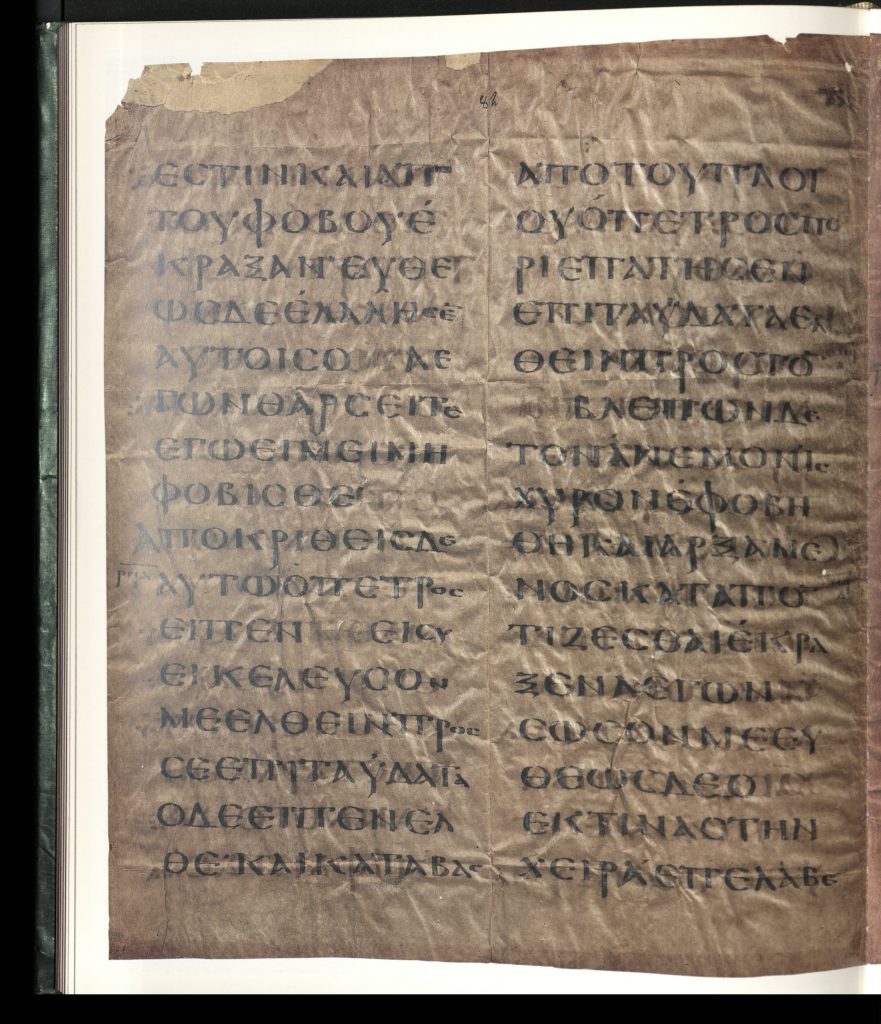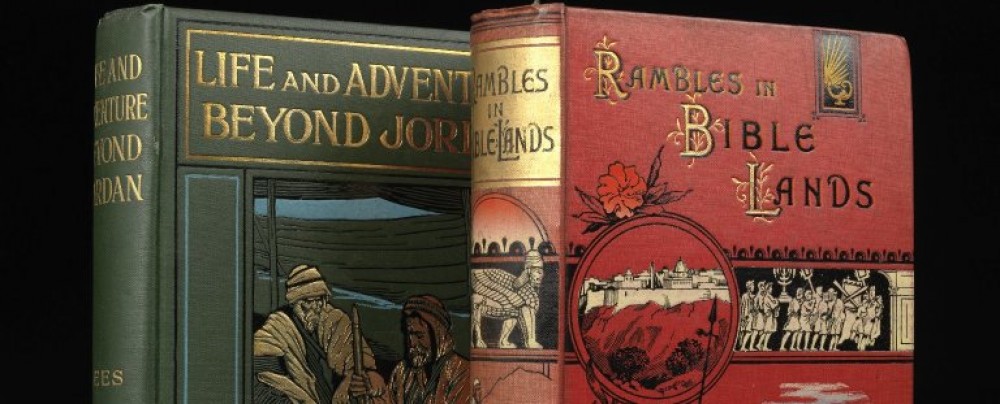A post from guest curator Elijah Hixson, PhD student, School of Divinity
This month’s student led display at New College Library features the facsimile Codex Purpureus Petropolitanus, which is on display at the entrance to New College Library. This Codex is one of the three manuscripts to be discussed in the next Biblical Studies seminar “Window to a Sixth-Century Scriptorium: Three Luxury Gospel Manuscripts and the Scribes Who Made Them” on Friday 10 March.

Codex Purpureus Petropolitanus (N 022) [facsimile] Four Gospels; Sixth century (Possibly Syria?).
[Facsimile] Athens: Miletos, 2002
New College Library (Special Collections):
Ho Porphyrous Kōdix tōn euangeliōn Patmou kai Petroupoleōs; Folio Z.142
 These four letters are abbreviations for the words “God” and “Son” in the text: αληθως θ(εο)υ υ(ιο)ς ει (“Truly, you are the Son of God”).
These four letters are abbreviations for the words “God” and “Son” in the text: αληθως θ(εο)υ υ(ιο)ς ει (“Truly, you are the Son of God”).
The facsimile is open to Matthew 14:26–36. This opening is an excellent example of how much the conditions in which a book is kept can affect its appearance. These two folios remained together for around 1,300 years. They were numbered consecutively, relatively recently in their history (see the numbers 82 and 83 written in the centre of the top margins). At some point after they were numbered (probably around the year 1896, but not before 1820), the folio on the left was separated from the rest of the codex.

Codex Purpureus – left folio
When the folio resurfaced in Athens in the 1950s, its purple dye had faded, its silver ink had tarnished, and the folio had crease marks because it had been folded up. The folio on the right remained protected within the majority of the codex, and only the silver letters around the edges of the page were exposed to air and tarnished. which was sold to Russia in 1896, and it remains in St. Petersburg to this day.
Codex Purpureus Petropolitanus is cited as N in most modern critical editions of the Greek New Testament. Its text is an early form of the Byzantine textform found in the majority of Greek New Testament manuscripts. Most scholars think it was made in Syria (possibly Antioch).
Elijah Hixson, PhD candidate, School of Divinity
